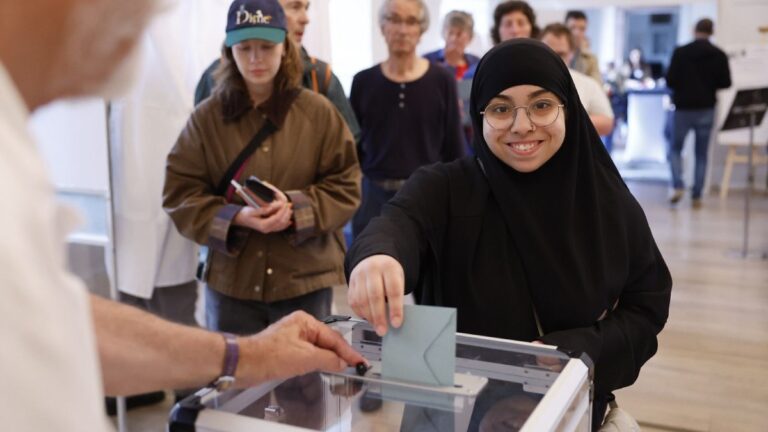A new study provides a demographic analysis of how French citizens voted in legislative elections.
The first round of French parliamentary elections, held on Sunday, saw high voter turnout and Record results for far-right national rally (RN).
Nearly 67% of France’s 49.5 million eligible voters turned out to vote, a level not seen since the late 1990s. The RN won 33% of the vote, giving it a majority in the National Assembly and the potential to take power next Monday.
The left-wing New Popular Front (NFP) came in second with 29 percent of the vote, while French President Emmanuel Macron’s centrist coalition came in third with just over a fifth of the vote, suffering its second major defeat in less than a month.
The RN and centrist Ensemble coalition’s election result was so close to the one they achieved in the European Parliament elections three weeks ago that it prompted President Macron to dissolve Parliament and call early elections.
So who did each party manage to attract, and who did they not manage to attract?
Youth Vote
Ipsos’s analysis of voter demographics among more than 10,200 voters a few days before the first round of voting showed that the RN won the most votes in every age group except those under 34 and those over 70.
While Macron’s Ensemble coalition won the most votes among older voters (32%), the centrist party performed very poorly among young people, who mainly voted for the NFP: up to 48% of the vote among 18-24 year olds went to the left-wing coalition, according to an Ipsos poll.
“One of the keys to Emmanuel Macron’s success was attracting young people in 2017, primarily because he represented a kind of political and generational renewal,” Frédéric Michaud, deputy managing director at pollster Opinionway, told Euronews.
“But he’s getting older, and on top of that, we now have Jordan Bardella, who is much younger than him,” Michaud said, which partly explains RN’s appeal.
Far-right political party It came in second among young people, winning about a third of both the 18-24 and 25-34 age groups.
Bardella He has a strong following on social media, particularly on TikTok, where he is more often seen rubbing shoulders with constituents, drinking beers and sharing random thoughts in “behind the scenes” videos than analyzing RN’s actual policies.
“for [the hard-left] “LFI and NFP are, generally speaking, a bit more classic electoral. These are votes that traditionally attract more young people than other electoral options,” Michaud said.
Popularity vote
According to Ipsos, the majority of people who identify as “disadvantaged” overwhelmingly supported the RN (54%). The far-right party also won the highest share of the “ordinary” vote (38%), Left wing coalition.
A majority of voters who said they were barely making ends meet or surviving on savings or loans (41% and 46% respectively) also supported the RN over its left-wing rivals.
Michaud told Euronews that the trend had grown over the past decade, driven in part by a “sense of abandonment and betrayal” among left-wing voters by the Socialist party, which led the country under President François Hollande from 2012 to 2017.
Macron has not been immune to this influence, having served as adviser to Hollande early in his government and then as economy minister for two years. His policies since taking up his post at the Elysée palace have been seen as an extension of reforms he began in his time at the economy ministry, aimed at cutting red tape for companies, lowering the pension age and abolishing wealth taxes.
This has made left-leaning voters more receptive to the RN’s message and “allowed them to speak to their purchasing power and their everyday concerns, especially in terms of security,” Michaud said.
Protest vote
Not surprisingly, the vast majority of voters said they were satisfied or very satisfied. Macron voted for a centrist coalition.According to an Ipsos survey:
However, a third of those who said they were dissatisfied with the Prime Minister supported the NFP, while the majority (53%) of those who were very dissatisfied chose the RN.
So, did people protest against the RN or vote to support it?
“It’s both,” Opinionway’s Michaud told Euronews. “The National Assembly has long been a means of sanctions, of expressing anger or in any case of protest against the current government.”
“It still exists, but there are more and more votes in support. This is not just a way of opposition, but also a choice of ideological support for the various measures proposed by Jordan Bardella’s party,” he added.

